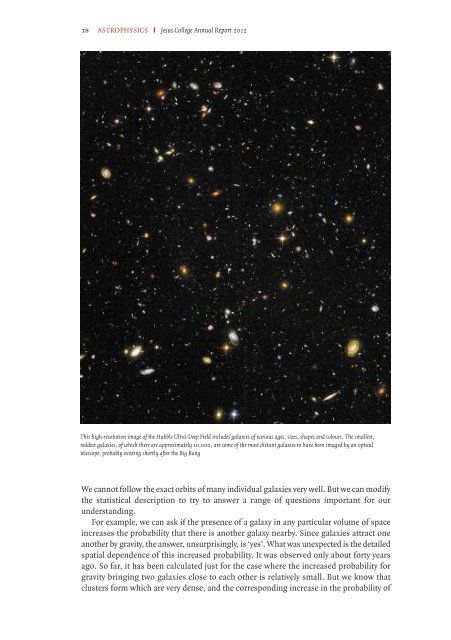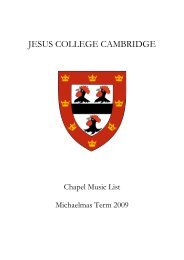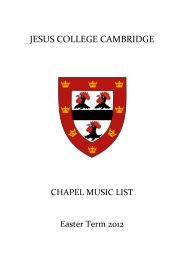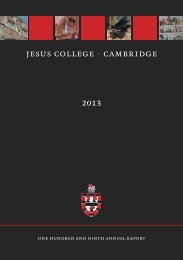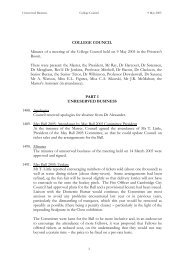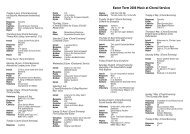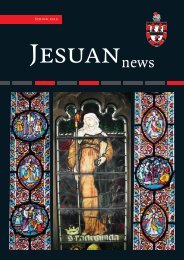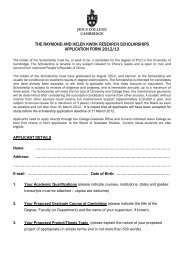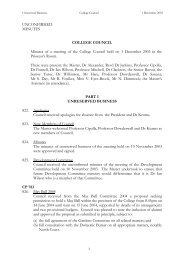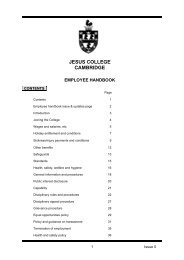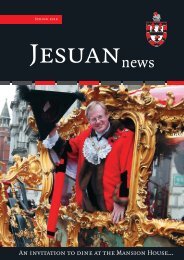2012 Annual Report - Jesus College - University of Cambridge
2012 Annual Report - Jesus College - University of Cambridge
2012 Annual Report - Jesus College - University of Cambridge
Create successful ePaper yourself
Turn your PDF publications into a flip-book with our unique Google optimized e-Paper software.
18 ASTROPHYSICS I <strong>Jesus</strong> <strong>College</strong> <strong>Annual</strong> <strong>Report</strong> <strong>2012</strong><br />
This high-resolution image <strong>of</strong> the Hubble Ultra-Deep Field includes galaxies <strong>of</strong> various ages, sizes, shapes and colours. The smallest,<br />
reddest galaxies, <strong>of</strong> which there are approximately 10,000, are some <strong>of</strong> the most distant galaxies to have been imaged by an optical<br />
telescope, probably existing shortly after the Big Bang<br />
We cannot follow the exact orbits <strong>of</strong> many individual galaxies very well. But we can modify<br />
the statistical description to try to answer a range <strong>of</strong> questions important for our<br />
understanding.<br />
For example, we can ask if the presence <strong>of</strong> a galaxy in any particular volume <strong>of</strong> space<br />
increases the probability that there is another galaxy nearby. Since galaxies attract one<br />
another by gravity, the answer, unsurprisingly, is ‘yes’. What was unexpected is the detailed<br />
spatial dependence <strong>of</strong> this increased probability. It was observed only about forty years<br />
ago. So far, it has been calculated just for the case where the increased probability for<br />
gravity bringing two galaxies close to each other is relatively small. But we know that<br />
clusters form which are very dense, and the corresponding increase in the probability <strong>of</strong>


